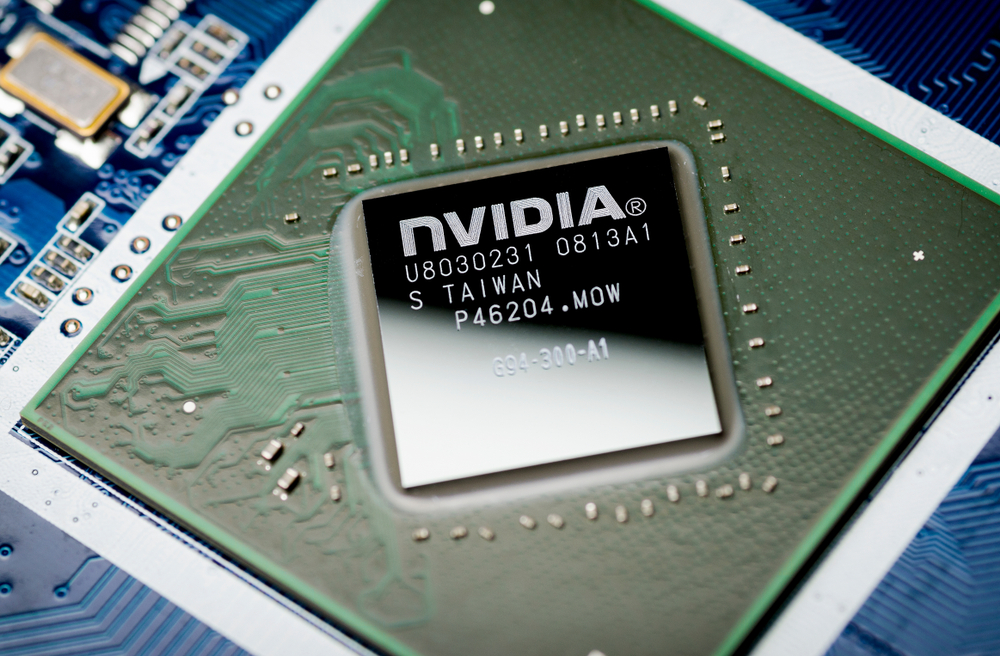Last week, Nvidia (Nasdaq: NVDA) briefly joined the trillion-dollar club.
The chipmaker’s share price touched $419 in intraday trading, pushing its market cap above $1 trillion (it recently fell back a bit).
That placed it amongst rare company, as only a handful of firms have ever been worth $1 trillion. These include Apple(Nasdaq: AAPL), Microsoft (Nasdaq: MSFT), Saudi Aramco (Tadawul: 2222), Alphabet (Nasdaq: GOOG) and Amazon (Nasdaq: AMZN).
(Note: In the upcoming July issue of The Oxford Communiqué, Alexander Green writes about another company he thinks has the potential to join this elite club.)
Apple was the first company to exceed $1 trillion, doing so back in July 2018. Since then, it’s been growing at a healthy clip, and it’s now valued at more than $2.9 trillion.
But will the iPhone maker ever lose its coveted No. 1 ranking?
Of course it will.
And Nvidia could well be the usurper. Here’s a chart of the two stocks’ performance over the past five years. While both have soared, Nvidia has outpaced Apple by a mile, with a rise of almost 500% since June 2018, while Apple has jumped 285% in that time.

Mobile phone technology has been a compelling narrative for investors for more than a decade.
If I’d told you in 2007 (the year the iPhone debuted) that in 2023 you would probably do most of your banking, shopping, reading and media viewing on your phone, you would have laughed.
But here we are.
And that has driven Apple to the top of the heap.
It joined the top 10 companies by market cap in January 2010, a couple of years after it introduced the first iPhone. And iPhone sales now account for almost half of the company’s revenue, while computers, tablets and accessories combine for the other half.
A New Narrative
Today, technological innovations abound. Of them, artificial intelligence (AI) is probably the most significant and the most talked about.
I’m sure you’ve heard of the AI-powered search engine called ChatGPT. It’s been among the biggest stories of 2023. And the applications of AI may well be the narrative of the next 10 years.
At The Oxford Club’s recent 25th Annual Investment U Conference in Ponte Vedra Beach, Florida, I spoke to several AI experts who were in awe of the rapid developments in the field. One told me he thinks AI and the industries it spawns will be more important than the internal combustion engine. Another predicted that the economic and societal changes that AI causes will exceed those of the Industrial Revolution.
They’re not the only ones who expect mind-blowing changes to emerge from AI technologies.
And that’s exactly what we’re seeing in Nvidia’s stock chart: the collective belief that something dramatically new is on the horizon.
Nvidia’s 250% ascent since October of last year is due to the fact that it makes the advanced chips that power AI. ChatGPT was created – or “trained,” in AI parlance – using 10,000 Nvidia graphics processing units.
So is Nvidia destined to eclipse Apple and the other tech giants that now dominate the list of the world’s largest companies?
It’s impossible to know.
But if you go all the way back to the year 2000 and look at the top 10 list, you’ll see a very different cast of corporate characters. Apple is nowhere to be found. And the largest company that year was Microsoft, with networking equipment maker Cisco Systems (Nasdaq: CSCO) and chipmaker Intel (Nasdaq: INTC) not far behind.
(You can watch the changes in the top 10 over the past 23 years here thanks to Visual Capitalist.)
The changing list of the top 10 firms tells us many stories, and here’s one of them…
Microsoft, Intel and Cisco created the software and hardware to connect us to the internet (or at least were among the most important firms to do so).
Then Apple created the iPhone, which put all that technology into a tiny handheld device.
And next comes AI, which has the power to put all those applications and technologies on steroids and make them more powerful by magnitudes.
It may or may not be Nvidia that rises to the top of the list. It will certainly have its challengers.
